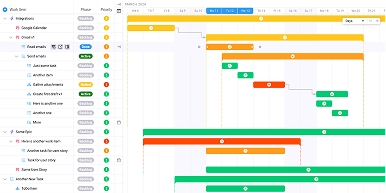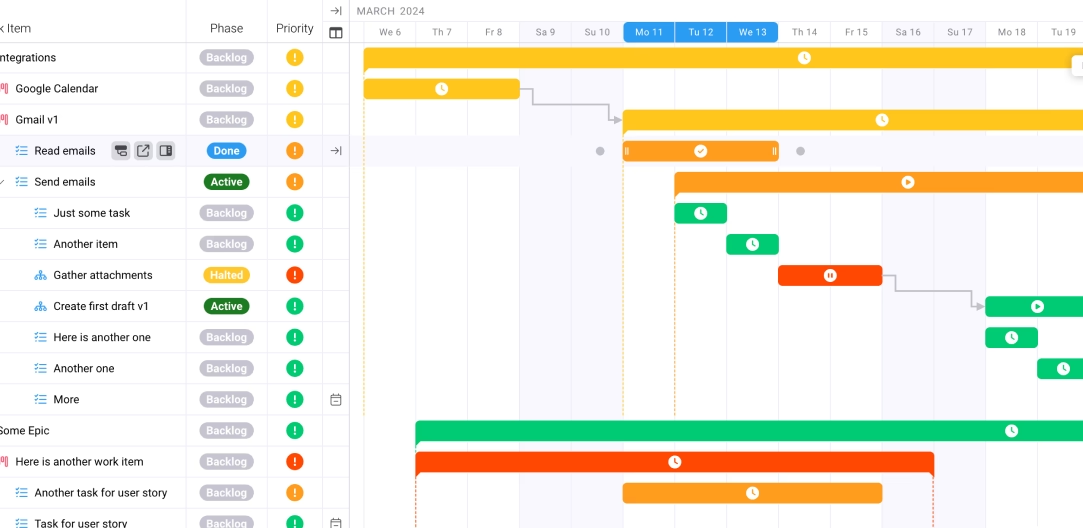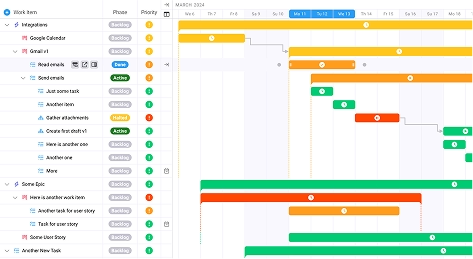
High-Converting Proposal Templates That Win Agency Pitches Every Time
Key takeaways:
- Strategic proposal templates can increase win rates by up to 300% when properly customized and deployed
- The most successful agencies treat proposals as marketing collateral that tells a compelling business transformation story
- Data-driven customization beats generic templating every time—winning proposals address specific client pain points with measurable solutions
- Visual storytelling and video integration are becoming essential differentiators in an increasingly competitive landscape
While most agencies scramble to create new proposals from scratch for every pitch, the most successful firms have quietly been leveraging a counterintuitive approach: proposal templates that win agency pitches aren’t about standardization—they’re about systematized customization. The harsh reality? The 45% average RFP win rate across all industries means that most agencies are losing more than half of their pitches, often due to proposals that fail to resonate with decision-makers.
Here’s what will transform your agency’s success rate: high-converting proposal templates that win agency pitches function as strategic frameworks that combine proven psychological triggers, client-specific customization points, and persuasive narrative structures that make saying “yes” irresistible.
The Current Challenge: Why Most Agency Proposals Fail
The proposal landscape has fundamentally shifted, yet most agencies continue operating with outdated approaches. Today’s reality reveals a sobering truth: companies derive 30-40% of their sales revenue through deals involving RFPs, making proposal success critical for agency survival and growth.
The primary challenge isn’t lack of expertise—it’s the failure to understand that marketing proposals serve as influential marketing collateral themselves. Most agencies approach proposals as administrative necessities rather than strategic sales tools designed to influence decision-making psychology.
The win rate statistics paint a clear picture of missed opportunities. While incumbent win rates of 60-90% versus 15% for new opportunities demonstrate the power of existing relationships, they also reveal that agencies with the right approach can dramatically improve their success rates even when competing against established providers.
The complexity multiplies when agencies face diverse decision-makers within the same organization. Research confirms that clients process information differently and require tailored presentation approaches, yet most agencies use one-size-fits-all proposal formats that fail to resonate with varied stakeholder preferences.
Adding to these challenges, the digital transformation wave has elevated client expectations. With global spending on AI-driven content generation reached $36 billion in 2024, clients now expect agencies to demonstrate cutting-edge capabilities while delivering measurable business outcomes.
The decision-making process itself has become more complex, with two-thirds of consumers delay decisions when faced with too many options. This paradox of choice means that winning proposals must simplify the decision while providing comprehensive justification for selection.
The Strategic Framework: Building High-Converting Proposal Architecture
The most successful agencies have discovered that winning proposals follow a systematic approach that balances emotional engagement with logical justification. This framework transforms proposals from cost centers into profit drivers by treating every section as a strategic persuasion opportunity.
The Psychology-Driven Proposal Structure
The foundation of high-converting proposals rests on understanding how procurement teams and decision-makers process information. Rather than leading with capabilities, winning proposals begin with business impact narratives that position the agency as a strategic partner rather than a vendor.
Start with a contrarian insight or market disruption that challenges conventional thinking. This approach immediately positions your agency as forward-thinking while creating cognitive engagement that ensures your proposal receives careful consideration rather than cursory review.
The executive summary must function as a standalone business case that busy executives can digest in under two minutes. Include specific metrics, projected outcomes, and risk mitigation strategies that demonstrate deep understanding of the client’s market position and competitive challenges.
Visual Storytelling Integration
Modern proposals require visual elements that support rapid comprehension while maintaining professional credibility. The most effective agencies integrate 90% of marketers report significant ROI from video marketing by including brief video introductions, animated process overviews, and interactive timeline presentations.
Infographics should present complex strategies in digestible formats while maintaining brand consistency that reinforces your agency’s attention to detail. Every visual element must serve a strategic purpose—whether building credibility, explaining complex concepts, or demonstrating potential outcomes.
Customization at Scale
The secret to effective templating lies in creating systematic customization points rather than generic fill-in-the-blank sections. Successful templates include research prompts, competitive analysis frameworks, and client-specific pain point identification systems that ensure every proposal feels bespoke while maintaining consistent quality standards.
This approach requires upfront investment in template development but dramatically reduces proposal creation time while improving win rates. The template becomes a strategic checklist that ensures no critical persuasion elements are overlooked while maintaining proposal-to-proposal consistency.
Implementation Tactics: Five Essential Template Components
Component 1: The Strategic Context Opener
Replace traditional agency introductions with market context that positions your understanding of the client’s industry challenges. Begin each proposal by demonstrating awareness of industry trends, competitive pressures, and emerging opportunities that impact the client’s business model.
This section should establish thought leadership while creating urgency around the proposed initiative. Reference specific industry reports, market disruptions, or competitive movements that make immediate action advisable rather than optional.
The goal is positioning your agency as the strategic partner who understands the broader business context rather than simply another marketing vendor. This positioning influences how decision-makers categorize your proposal and affects their willingness to invest in premium-priced solutions.
Component 2: The Problem-Agitation-Solution Sequence
The most persuasive proposals don’t simply address stated needs—they uncover hidden problems that the client hasn’t fully recognized. This approach requires deep discovery work but creates compelling business cases that justify significant investment.
Start by acknowledging the obvious challenges mentioned in the RFP, then transition to broader implications that extend beyond immediate marketing needs. Connect marketing challenges to revenue impacts, competitive positioning, and long-term brand value that resonates with C-level decision-makers.
The solution presentation must feel inevitable rather than optional. Structure recommendations as logical responses to identified problems while demonstrating how your approach addresses root causes rather than symptoms. This positioning justifies premium pricing while reducing price-based competition.
Component 3: The Proof and Social Evidence Section
Credibility building requires more than case study inclusion—it demands strategic proof sequencing that builds confidence while addressing unstated concerns. The most effective approach combines quantitative results with qualitative testimonials that speak directly to the prospect’s situation.
Present case studies in problem-solution-outcome format that mirrors the prospect’s challenges. Include specific metrics, timelines, and obstacles overcome that demonstrate your ability to deliver results under similar circumstances. 15 proven client acquisition strategies for marketing agencies provides valuable insights for strengthening this component.
Third-party validation becomes particularly powerful when it addresses specific concerns that prospects typically harbor about agency partnerships. Include testimonials that speak to communication quality, deadline adherence, and strategic thinking rather than just tactical execution.
Component 4: The Implementation and Success Metrics Framework
Winning proposals distinguish themselves by providing detailed implementation roadmaps that reduce perceived risk while demonstrating operational sophistication. This section must balance comprehensive planning with flexibility that acknowledges unknown variables.
Create phased implementation timelines that include key milestones, decision points, and optimization opportunities. The approach should demonstrate systematic thinking while providing clear expectations for client involvement and resource requirements.
Success metrics must extend beyond traditional marketing KPIs to include business impact measurements that resonate with senior decision-makers. Connect marketing activities to revenue outcomes, customer lifetime value improvements, and competitive advantage development that justifies the investment.
The implementation section should also address project management frameworks that enhance agency efficiency to demonstrate operational excellence and reduce client concerns about project execution.
Component 5: The Investment and Value Justification
Pricing presentation significantly impacts win rates, requiring strategic positioning that emphasizes value creation rather than cost minimization. The most successful agencies present investment options that guide prospects toward optimal solutions while maintaining profitability.
Structure pricing in tiers that provide clear value differentiation while making the recommended option appear reasonable in comparison. Include ROI projections, cost-per-acquisition improvements, and efficiency gains that demonstrate positive financial impact.
Address budget concerns proactively by presenting implementation options that accommodate various investment levels while maintaining strategic coherence. This approach reduces budget-based objections while positioning your agency as consultative rather than transactional.
Measuring Success: KPIs and Optimization Metrics
Primary Win Rate Indicators
The fundamental success metric remains proposal win rate improvement, but sophisticated measurement goes beyond simple conversion tracking. Monitor win rates by client size, industry vertical, and competition level to identify patterns that inform template optimization.
Track progression metrics including shortlist advancement rates, presentation invitation frequency, and final round participation. These leading indicators provide earlier feedback than final win/loss data while identifying specific improvement opportunities.
Quality metrics should include average deal size increases, project scope expansion, and contract duration improvements that demonstrate the template’s impact on business value creation rather than just volume metrics.
Client Engagement Analytics
Modern proposal platforms provide detailed engagement analytics that reveal how prospects interact with your proposals. Monitor section viewing time, document sharing patterns, and revision request frequency to understand which elements generate the most interest.
Use engagement data to optimize template structure, content emphasis, and visual element placement. High-engagement sections indicate successful positioning while low-engagement areas require content revision or structural repositioning.
Track stakeholder engagement patterns to understand how proposals circulate within prospect organizations. This intelligence informs future customization approaches while revealing decision-making dynamics that affect win probability.
Competitive Differentiation Metrics
Measure your template’s effectiveness against competitive proposals by tracking selection rationale, client feedback themes, and lost opportunity analysis. This intelligence guides template refinement while identifying market positioning opportunities.
Document common objections, competitor advantages mentioned in lost deals, and pricing sensitivity patterns that inform template content and positioning adjustments. This feedback loop ensures continuous improvement while maintaining competitive relevance.
The most successful agencies also measure mastering client retention for long-term agency relationships by tracking how proposal quality correlates with long-term client satisfaction and account growth potential.
Future Considerations: Emerging Trends and Adaptation Strategies
AI-Powered Personalization at Scale
The integration of artificial intelligence into proposal development represents the next evolution in competitive differentiation. Advanced agencies are beginning to leverage AI for prospect research automation, content personalization, and competitive analysis that enhances template effectiveness.
Predictive analytics can identify prospect preferences, optimal content sequencing, and pricing sensitivity that informs real-time template customization. This technology enables mass personalization while maintaining the efficiency benefits of systematic templating.
However, the human element remains critical for strategic positioning and relationship building that technology cannot replicate. The future belongs to agencies that effectively blend AI efficiency with human insight and creative problem-solving.
Interactive and Multimedia Integration
The shift toward interactive proposals reflects changing client expectations and generational preferences among decision-makers. Modern templates must accommodate video integration, interactive budgeting tools, and real-time collaboration features that enhance the evaluation experience.
These capabilities become particularly valuable when competing against larger agencies with more resources. Interactive elements can level the playing field by creating memorable experiences that demonstrate innovation while building emotional connection with the brand.
The challenge lies in balancing technological sophistication with accessibility across different client technology environments. Templates must remain functional regardless of the prospect’s technical capabilities while providing enhanced experiences when possible.
Sustainability and Values-Based Positioning
Environmental and social responsibility considerations increasingly influence agency selection decisions, particularly among enterprise clients with public sustainability commitments. Future-ready templates must address these concerns while demonstrating genuine commitment rather than superficial positioning.
This trend extends beyond environmental impact to include diversity, equity, and inclusion considerations that affect both agency team composition and campaign strategy development. Templates should systematically address these factors while avoiding performative messaging that lacks substance.
The agencies that successfully integrate values-based positioning into their proposal templates will gain competitive advantages while attracting higher-quality clients who prioritize long-term partnerships over transactional relationships.
Winning agencies recognize that proposal templates that win agency pitches represent strategic assets that compound in value over time. The initial investment in developing sophisticated, psychology-driven templates pays dividends through improved win rates, larger average deal sizes, and stronger client relationships that drive sustainable growth.
The most successful approach combines systematic templating with strategic customization, creating proposals that feel bespoke while maintaining operational efficiency. This balance enables agencies to compete effectively against larger competitors while building the foundation for scalable business development success.
The evidence is clear: $23,000,000 of business won using proven proposal templates demonstrates the transformative impact of strategic proposal development. Agencies that invest in high-converting proposal templates that win agency pitches position themselves for sustained competitive advantage in an increasingly demanding marketplace.
Frequently Asked Questions
How long should a marketing agency proposal be?
A marketing agency proposal should typically be 8-15 pages for most pitches, focusing on quality over quantity. Include an executive summary that can stand alone for busy decision-makers, while providing detailed sections for stakeholders who need comprehensive information.
What’s the best way to price services in a proposal?
Present pricing in tiered options that guide prospects toward your recommended solution. Include ROI projections and value justification that demonstrate positive financial impact, making the investment decision easier for clients.
How can I make my proposal stand out from competitors?
Focus on business outcomes rather than marketing activities, include specific industry insights that demonstrate deep understanding, and use visual storytelling elements that enhance comprehension while maintaining professional credibility.
Should I include case studies in every proposal?
Yes, but select case studies that closely mirror the prospect’s challenges and objectives. Present them in problem-solution-outcome format with specific metrics that demonstrate your ability to deliver results in similar situations.
How often should I update my proposal templates?
Review and update templates quarterly to incorporate new case studies, market insights, and feedback from recent pitches. Major updates should occur annually to ensure alignment with industry trends and competitive positioning.
What’s the most important section of a marketing proposal?
The executive summary carries the most weight since it’s often the only section that all decision-makers read completely. It must function as a standalone business case that clearly articulates value, outcomes, and next steps.
How do I handle pricing objections in proposals?
Address pricing concerns proactively by including ROI calculations, competitive cost comparisons, and phased implementation options that accommodate various budget levels while maintaining strategic coherence.
What digital tools should I use for proposal creation?
Invest in professional proposal software that provides analytics, interactive elements, and collaboration features. The tools should enhance rather than complicate your proposal process while providing insights into prospect engagement.
How can I improve my proposal win rate quickly?
Focus on improving your executive summary, adding relevant case studies, and including specific ROI projections. These elements have the highest impact on decision-maker perception and can be implemented immediately.
Should proposals include video content?
Yes, brief video introductions or process explanations can significantly enhance proposal effectiveness, especially when competing for high-value accounts. Keep videos under 3 minutes and focus on strategic insights rather than promotional content.









